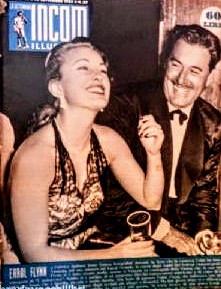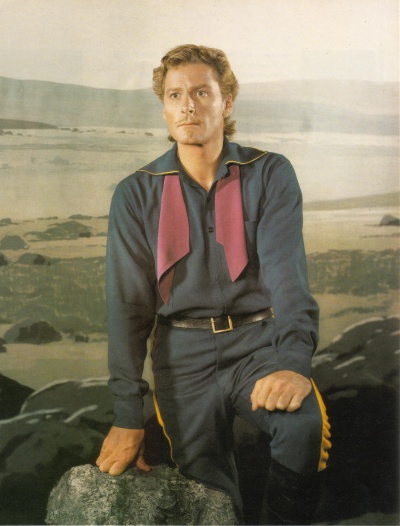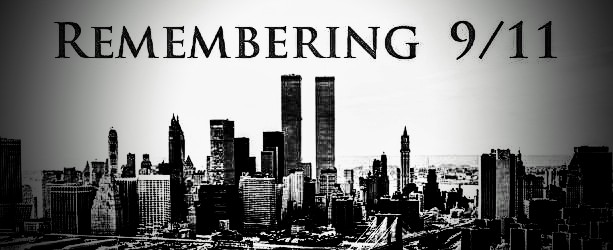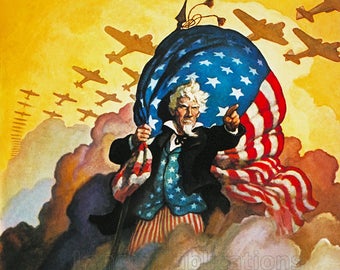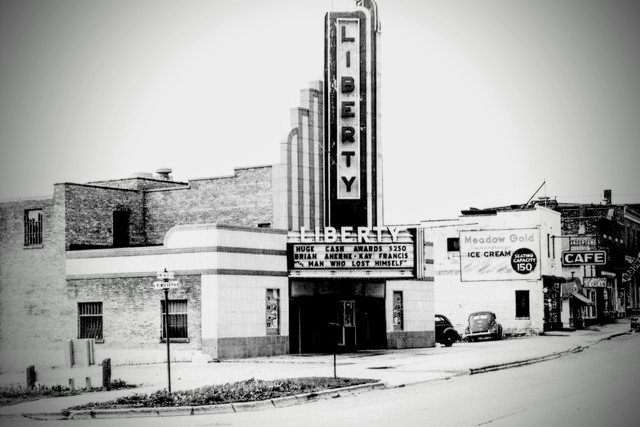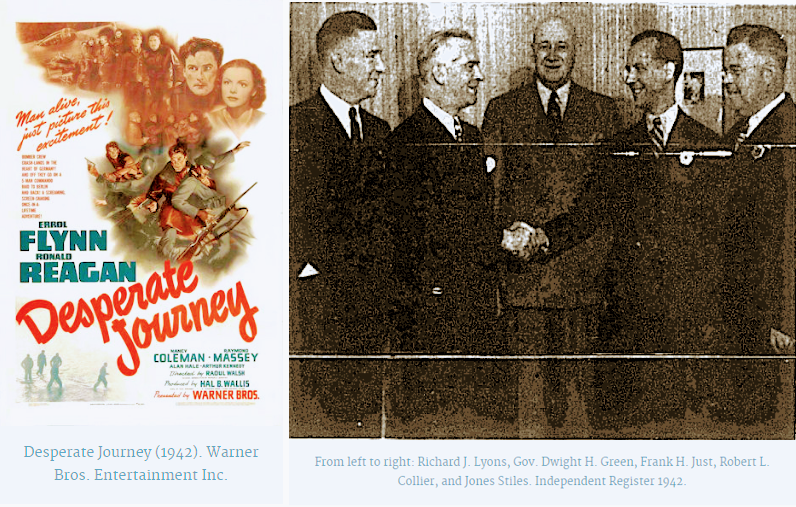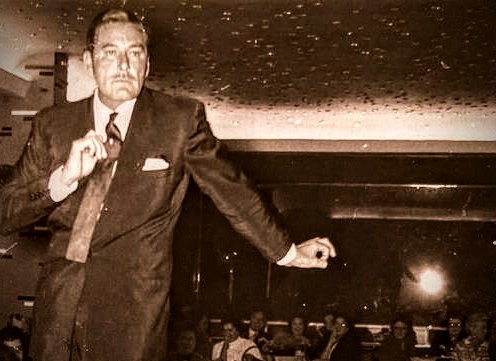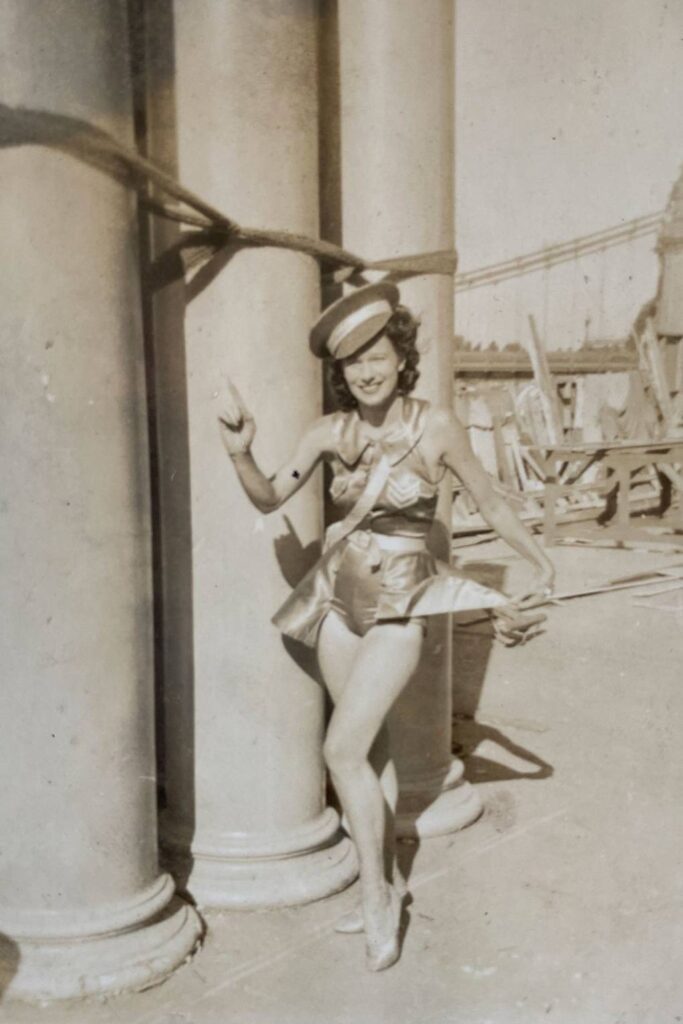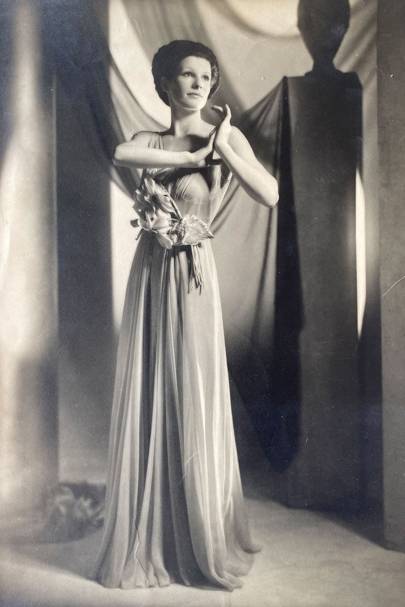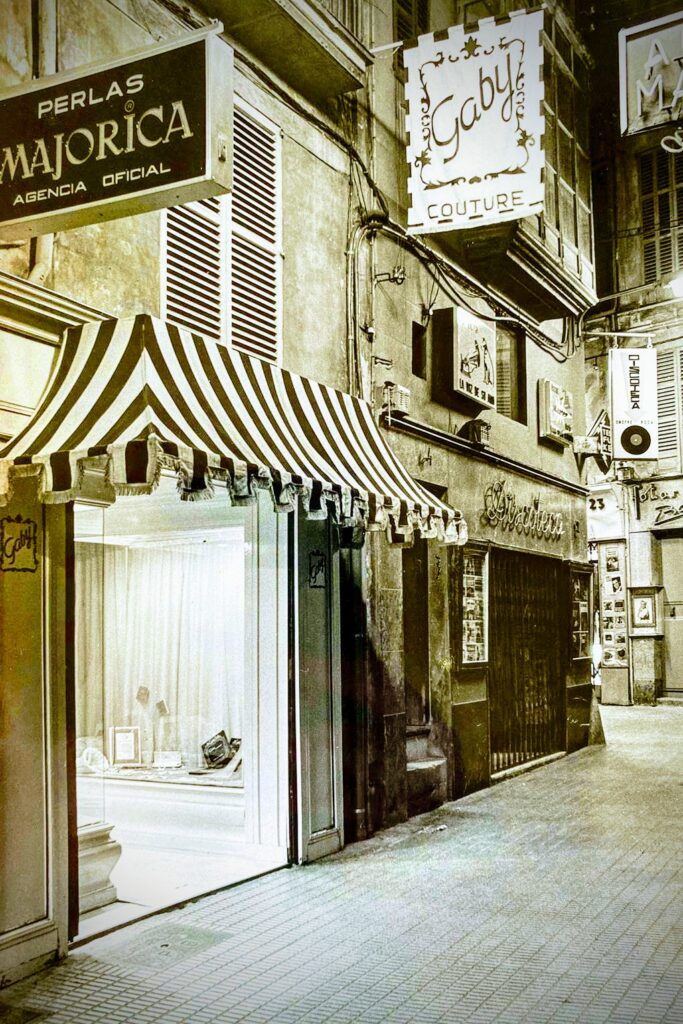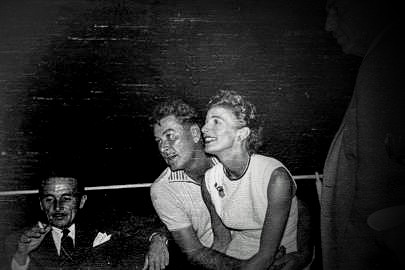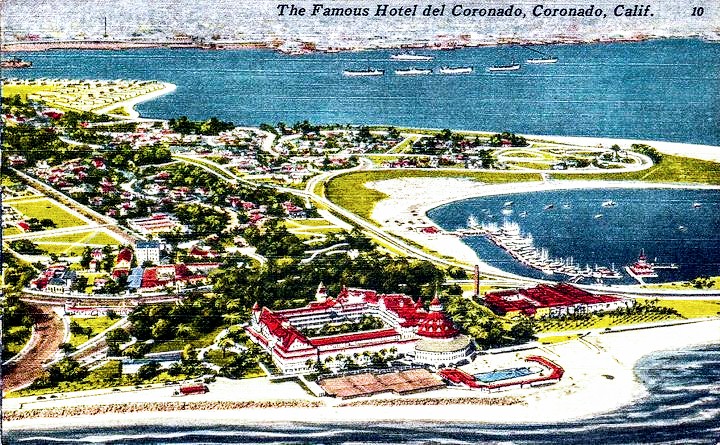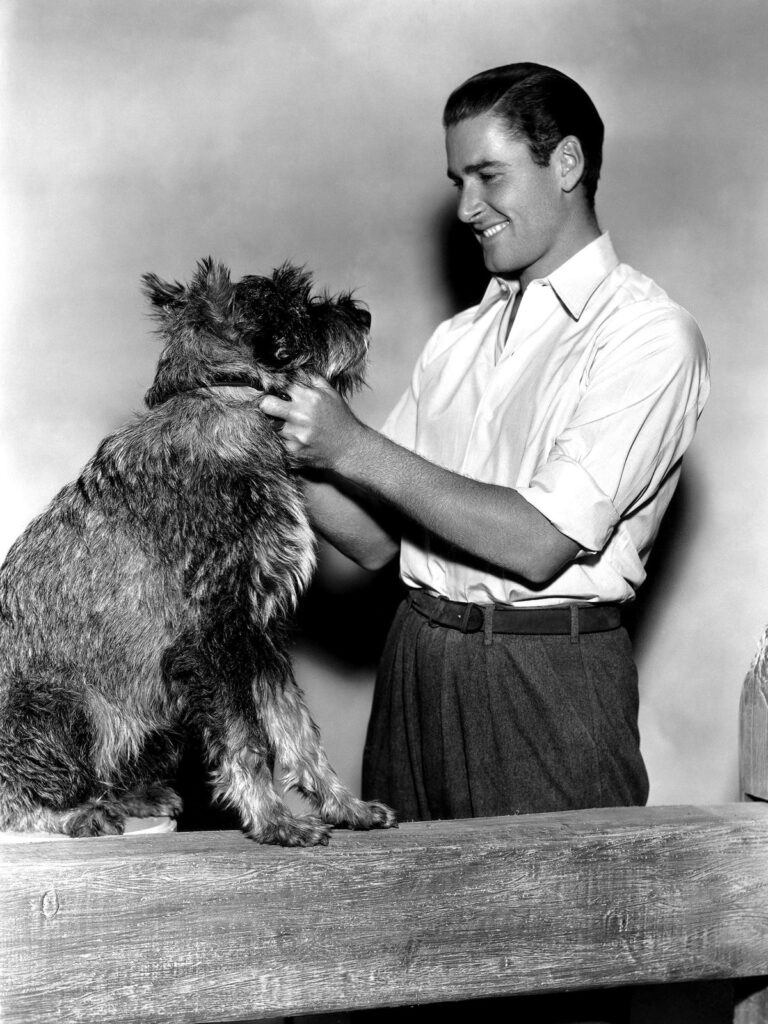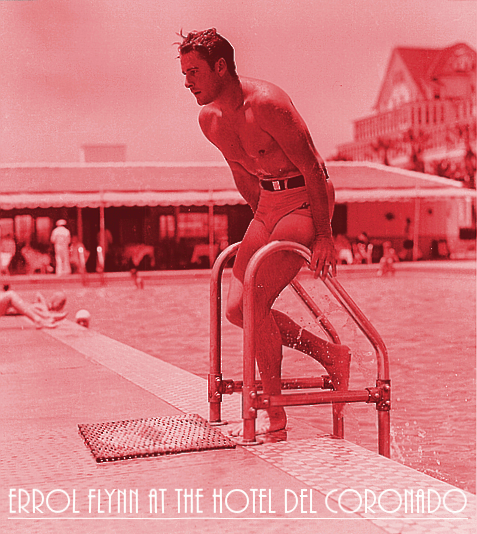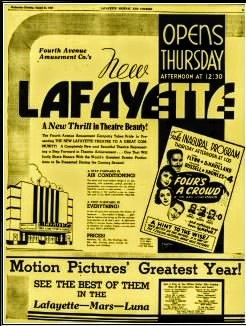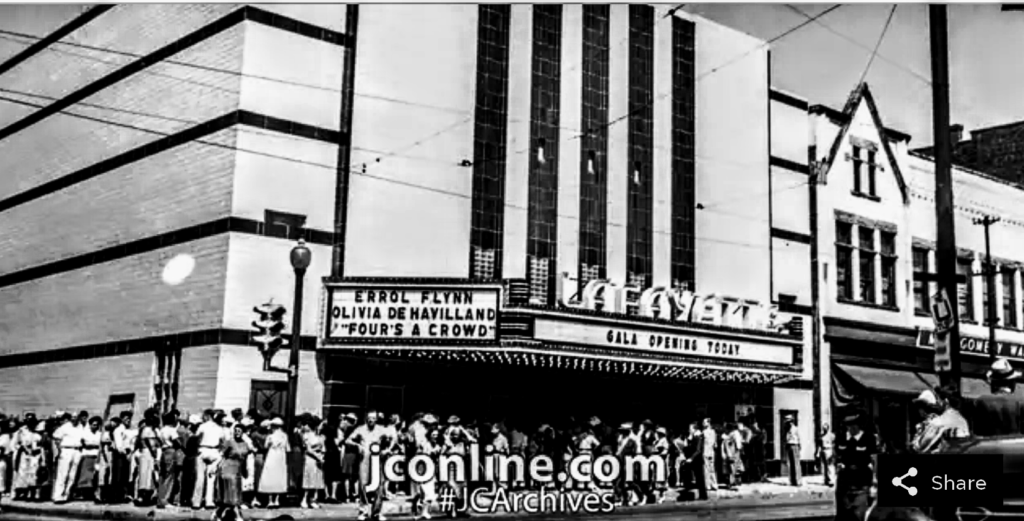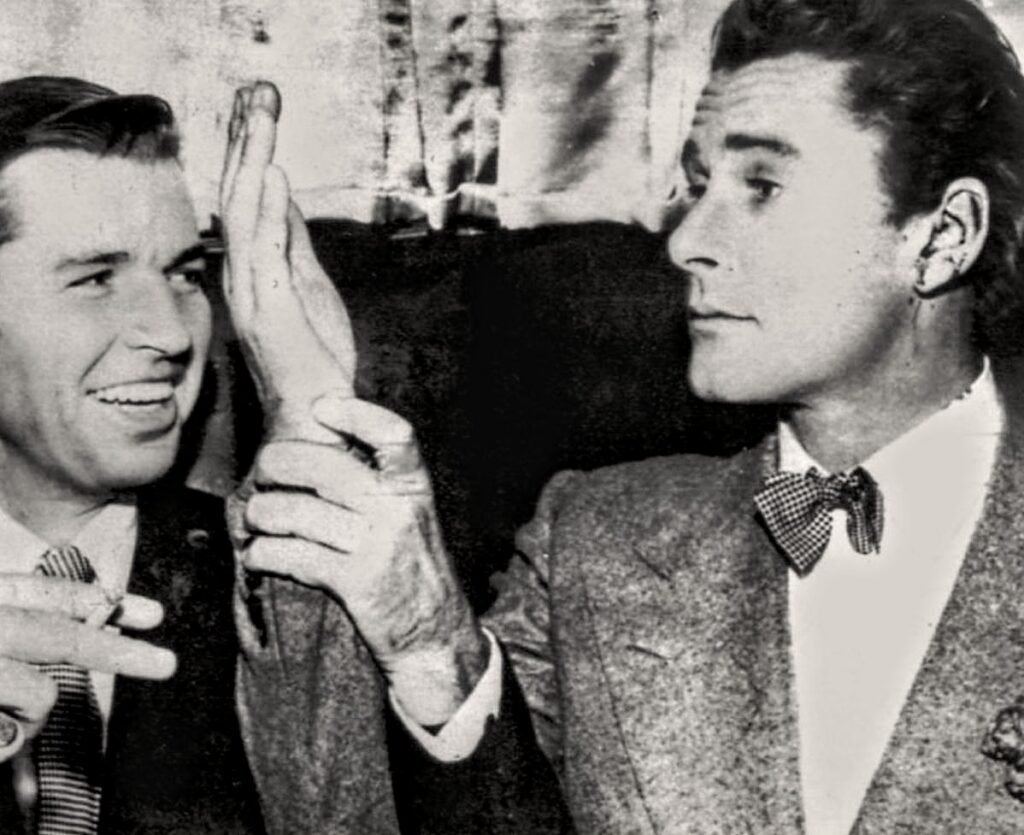
HOLLYWOOD –
On September 20, 1941, Errol engaged in one of the most notorious nightclub fights in Hollywood history when he slapped gossip columnist Jimmie Fidler, whose wife then stabbed Errol in his ear with a fork. Below are excerpts and summaries from various accounts of :
“All the blood came from the veins of Flynn. He charged that Fidler’s wife, Bobbie, stabbed him in the ear with a fork. Movie celebrities at surrounding tables in the Club Mocambo verified his story of Mrs. Fidler’s use of her fork as a fencing foil. The Fidlers were sitting with Samuel Zagon, Hollywood attorney, and his wife, when Flynn and Bruce Cabot walked into the celebrity-jammed room. Flynn spied Fidler, called him names, and started to poke him. Tables were overturned. Fidler’s coffee was decorating his shirt front. His wife was screaming. Blood was squirting from Flynn’s ear lobe and a dozen men were grappling with the fighters. The scene resembled the riot of stunt men in the night club sequence of many a Flynn movie. The manager was about to cell the cops when Phil Ohman’s band struck up “the Star Spangled Banner” and all hands stood at attention, dribbling blood, sweat, and rose buds from the overturned vases of one of Hollywood’s most expensive drinkeries. The gladiators retired to pose for photographs and issue statements.”
…
“I put my left fist up against his chin and gave him a slap with my right hand on the side of the head. I said ‘You’re not worth a fist.’” But then “his wife became angered and I tried to hold her to one side, still gripping Fidler, but finally she jabbed at me with a fork, which would have stuck me in the eye had I not turned my head. Instead it pierced my ear. I must say that I admire Mrs. Fidler, God bless her. She has the courage to try to defend her husband — much more courage than he himself has.”
…
“I slapped him. In Ireland that’s tantamount to the worst insult a man can give another man … I want to add, however, that [Mrs. Fidler] showed bad etiquette and used the wrong fork — she should have used the entree fork.”
…
“Fidler claimed Flynn had come over to the table, ran his mouth, tried to punch him, lost his diamond cuff links in the process, accused Fidler of stealing said cufflinks, gone back to drinking, taken a lady to the dance floor, passed his seat on the way there, and up and tried to punch him again.”
“And when things were just about to get real, the band leader started into “The Star-Spangled Banner.”
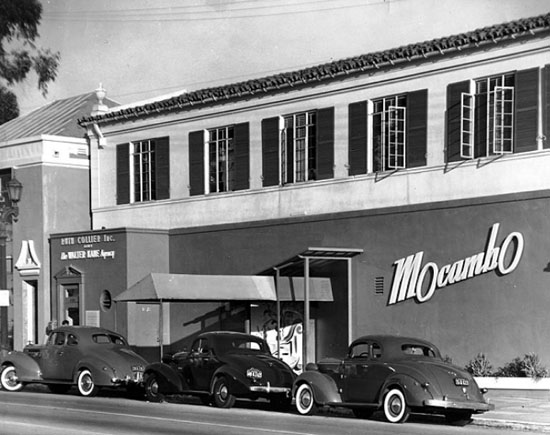
“Like the Cafe Trocadero and Ciro’s, the Mocambo was a world-famous nightclub on the Sunset Strip catering to celebrities. Located at 8588 Sunset Blvd. [map], it opened on January 3, 1941, featuring Mexican-themed decor said to have cost over $100,000 (about $1.6 million today) and dominated by glass-walled aviaries that housed live macaws, cockatoos, parrots and other birds.
During its 17-year run, the Mocambo was the scene of a number of celebrity brawls. In 1941, a movie agent named William Burnside cold-cocked restaurateur Michael Romanoff there, for reasons now forgotten. “I wish they had let me go just for a minute and I would have annihilated him,” Romanoff said later. In October that year, Errol Flynn punched Los Angeles Times columnist Jimmy Fidler at Mocambo in retaliation for purported derogatory comments Fidler had made in his column.
…
Phil Olman was a premier pianist, first in New York performing and recording with George Gershwin, Irving Berlin and Paul Whiteman, et al. Then he left for the left coast, where he specialized in teaching actors and pianists how to play piano in Hollywood films, in addition to recording and playing the top celebrity nightclubs. He is known for songs like “I Love a Parade”, “Penthouse Serenade”, “Funny Face”, “Each Time You Say Goodbye [I Die a Little]”, and many, many more. Unfortunately, I could not find any recordings of him playing the Star-Spangled Banner!
— Tim
